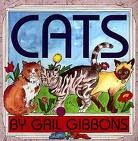"Books are the quietest and most constant of friends; they are the most accessible and wisest of counselors, and the most patient of teachers"
Charles W. Eliot
Thank You, Mr. Falker
Sardine in Outer Space
Sadie and the Snowman
Whispers of War
A Handful of Time
Cats
Something Good
The Old Woman Who Lived in a Vinegar Bottle
Anne Frank
How the Sun Made A Promise and Kept It
Dinosaur Dinner (With A Slice of Alligator Pie)
Quincy Rumpel
Ramona and Her Father
Gilda Joyce
Too Many Toys
Sugarpuss and Sweetie Pie
Little Red Riding Hood
Goldilocks and the Three Bears
Canadian Heroes
100 Days of School
Quilt Alphabet
Exploring Electricity
Let's Try it Out in the Air
Love You Forever
Come to My Party and Other Shape Poems















